Impacts of Video Display on Purchase Intention for Digital and Home Appliance Products—Empirical Study from China
Abstract
:1. Introduction
2. Literature Review
2.1. Online Product Display
2.2. Impacts of Videos on Different Products
2.3. Impacts of Video Display on Consumer Perceptions
2.4. S–O–R Model
3. Theoretical Framework
3.1. Usage Scenarios and Perceived Information Volume
3.2. Tutorial Information and Perceived Information Volume
3.3. Perceived Information Volume and Purchase Intention
3.4. Perceived Information, Perceived Risks, and Purchase Intention
3.5. Perceived Information, Perceived Value, and Purchase Intention
4. Methodology and Experiment Design
4.1. Experiment One: Product Usage Scenario
Experiment Design
4.2. Experiment Two: Product Tutorial Information
Experiment Design
4.3. Measurement Table Design
4.4. Data Collection
4.4.1. Experiment One
4.4.2. Experiment Two
5. Data Analysis and Hypothesis Testing
5.1. Reliability and Validity Test
5.2. Usage Scenario and Perceived Information Volume
5.3. Tutorial Information and Perceived Information
5.4. Perceived Information and Purchase Intention
5.5. Perceived Information, Perceived Risk, and Purchase Intention
5.6. Perceived Information, Perceived Value, and Purchase Intention
6. Conclusions
6.1. Theoretical Contributions
6.2. Management Implications
6.3. Limitations and Further Improvements
Author Contributions
Funding
Acknowledgments
Conflicts of Interest
References
- Wu, R.J.; Ou, X.Q.; Li, Y. Is smiling model better?—The study based on apparel e-retailers. J. Mark. Sci. 2018, 14, 65–83. [Google Scholar]
- Jai, T.M.; O’Boyle, M.W.; Fang, D. Neural correlates of sensory-enabling presentation: An fMRI study of image zooming and rotation video effects on online apparel shopping. J. Consum. Behav. 2014, 13, 342–350. [Google Scholar] [CrossRef]
- Kaur, G.; Quareshi, T.K. Factors obstructing intentions to trust and purchase products online. Asia Pac. J. Mark. Logist. 2015, 27, 758–783. [Google Scholar] [CrossRef]
- Kim, M.; Lennon, S. The effects of visual and verbal information on attitudes and purchase intentions in Internet shopping. Psychol. Mark. 2008, 25, 146–178. [Google Scholar] [CrossRef]
- Xu, P.; Chen, L.; Santhanam, R. Will video be the next generation of e-commerce product reviews? Presentation format and the role of product type. Decis. Support Syst. 2015, 73, 85–96. [Google Scholar] [CrossRef]
- Flavian, C.; Gurrea, R.; Orus, C. The influence of online product presentation videos on persuasion and purchase channel preference: The role of imagery fluency and need for touch. Telemat. Inform. 2017, 34, 1544–1556. [Google Scholar] [CrossRef]
- Suh, Y.H.; Kim, S.; Kim, W. Visual tactile attributes in online product presentations for improving purchase intention. Int. J. Contents 2018, 14, 7–15. [Google Scholar]
- Aljukhadar, M.; Senecal, S. Communicating online information via streaming video: The role of user goal. Online Inf. Rev. 2017, 41, 378–397. [Google Scholar] [CrossRef]
- Overmars, S.; Poels, K. Online product experiences: The effect of simulating stroking gestures on product understanding and the critical role of user control. Comput. Hum. Behav. 2015, 51, 272–284. [Google Scholar] [CrossRef]
- Jiang, Z.H.; Benbasat, I. Investigating the influence of the functional mechanisms of online product presentations. Inf. Syst. Res. 2007, 18, 454–470. [Google Scholar] [CrossRef]
- Yue, L.Q.; Liu, Y.M.; Wei, X.H. Influence of online product presentation on consumers’ trust in organic food a mediated moderation model. Br. Food J. 2017, 119, 2724–2739. [Google Scholar] [CrossRef]
- Fan, J.; Shen, D.Q.; Lin, F. The Impact of Product Image on Consumer’s Purchasing Intentions—Based on Moderating Effects of Product Type. J. Mark. Sci. 2014, 10, 97–108. [Google Scholar]
- Su, J.L.; Yin, C.Y.; Guo, S. The Effects of Online Product Presentation’s Sensory Cues on Consumer’s Purchase Intention: A mental imagery perspective. J. Mark. Sci. 2016, 12, 87–99. [Google Scholar]
- Huang, J.; Zou, Y.P.; Liu, H.L.; Wang, J.T.; Wuhan University. Is “Dynamic” Better Than “Static”? The Effect of Product Presentation on Consumer’s Evaluation-The Mediation Effect of Cognitive Processing. Chin. J. Manag. 2017, 14, 742–750. [Google Scholar]
- Roggeveen, A.L.; Grewal, D.; Townsend, C.; Krishnan, R. The Impact of Dynamic Presentation Format on Consumer Preferences for Hedonic Products and Services. J. Mark. 2015, 79, 34–49. [Google Scholar] [CrossRef]
- Kumar, A.; Tan, Y.L. The Demand Effects of Joint Product Advertising in Online Videos. Manag. Sci. 2015, 61, 1921–1937. [Google Scholar] [CrossRef] [Green Version]
- Li, M.X.; Wei, K.K.; Tayi, G.K.; Tand, C.-H. The moderating role of information load on online product presentation. Inf. Manag. 2016, 53, 467–480. [Google Scholar] [CrossRef]
- Wang, Q.; Cui, X.; Huang, L.; Dai, Y. Seller reputation or product presentation? An empirical investigation from cue utilization perspective. Int. J. Inf. Manag. 2016, 36, 271–283. [Google Scholar] [CrossRef]
- Pera, R.; Viglia, G. Exploring How Video Digital Storytelling Builds Relationship Experiences. Psychol. Mark. 2016, 33, 1142–1150. [Google Scholar] [CrossRef]
- Viglia, G.; Pera, R.; Bigné, E. The determinants of stakeholder engagement in digital platforms. J. Bus. Res. 2018, 89, 404–410. [Google Scholar] [CrossRef] [Green Version]
- Zhang, M.; Chen, Y.W. Relationship between product categories and online shopping decision-making process. Adv. Psychol. Sci. 2006, 5, 433–437. [Google Scholar]
- Tang, F. The Impact of Online Store Design on the Purchase Intentions of Customers—A Studyfrom the Perspective of Emotional Reactions; Zhejiang University: Zhejiang, China, 2012. [Google Scholar]
- Flavián, C.; Gurrea, R.; Orús, C. The Impact of Online Product Presentation on Consumers’ Perceptions. Int. J. E Serv. Mob. Appl. 2009, 1, 17–37. [Google Scholar]
- Nisbett, R.E.; Ross, L. Human Inference: Strategies and Shortcomings of Social Judgment. Philos. Rev. 1980, 26. [Google Scholar] [CrossRef]
- Nowlis, S.M.; Mandel, N.; Mccabe, D.B. The effect of a delay between choice and consumption on consumption enjoyment. J. Consum. Res. 2004, 31, 502–510. [Google Scholar] [CrossRef]
- Eroglu, S.; Machleit, K.; Davis, L. Atmospheric qualities of online retailing. J. Bus. Res. 2001, 54, 177–184. [Google Scholar] [CrossRef]
- Jeong, S.W.; Fiore, A.M.; Niehm, L.S.; Lorenz, F.O. The role of experiential value in online shopping: The impacts of product presentation on consumer responses towards an apparel. Internet Res. 2009, 19, 105–124. [Google Scholar] [CrossRef]
- Fiore, A.M.; Kim, J.; Lee, H.H. Effect of image interactivity technology on consumer responses toward the online retailer. J. Interact. Mark. 2005, 19, 38–53. [Google Scholar] [CrossRef]
- Penglan. Scene: New Element of Media in Mobile Times. Journalist 2015, 3, 20–27. [Google Scholar]
- Michael, S. Consumer Behavior Theory; China Renmin University Press: Beijing, China, 2014. [Google Scholar]
- Kim, M.; Lennon, S.J. Television shopping for apparel in the United States: Effects of perceived amount of information on perceived risks and purchase intentions. Fam. Consum. Sci. Res. J. 2010, 28, 301–331. [Google Scholar] [CrossRef]
- Kim, J.U.; Kim, W.J.; Sang, C.P. Consumer perceptions on web advertisements and motivation factors to purchase in the online shopping. Comput. Hum. Behav. 2010, 26, 1208–1222. [Google Scholar] [CrossRef]
- Kim, H.; Lennon, S. E-atmosphere, emotional, cognitive, and behavioral responses. J. Fash. Mark. Manag. 2010, 14, 412–428. [Google Scholar] [CrossRef]
- Featherman, M.S.; Pavlou, P.A. Predicting e-services adoption: A perceived risk facets perspective. Int. J. Hum. Comput. Stud. 2003, 59, 451–474. [Google Scholar] [CrossRef]
- Mitra, K.; Reiss, M.C.; Capella, L.M. An examination of perceived risk, information search and behavioral intentions in search, experience and credence services. J. Serv. Mark. 1999, 13, 208–228. [Google Scholar] [CrossRef]
- Tam, J.L.M. Customer satisfaction, service quality and perceived value: An integrative model. J. Mark. Manag. 2004, 20, 897–917. [Google Scholar] [CrossRef]
- Zeithaml, V.A. Consumer Perceptions of Price, Quality, and Value- A Means-End Model and Synthesis of Evidence. J. Mark. 1988, 52, 2–22. [Google Scholar] [CrossRef]
- Zhang, Y. Empirical Study of Factors Influencing Apparel Online Purchase Intention Based on S-O-R Model; Donghua University: Shanghai, China, 2012. [Google Scholar]
- Soutar, G.N. Consumer perceived value: The development of a multiple item scale. J. Retail. 2001, 77, 203–220. [Google Scholar]
- Dodds, W.B.; Monroe, K.B.; Grewal, D. Effects of Price, Brand, and Store Information on Buyers’ Product Evaluations. J. Mark. Res. 1991, 28, 307–319. [Google Scholar]
- Wen, Z.; Chang, L.; Hou, K.-T.; Liu, H. Testing and application of the mediating effects. Acta Psychol. Sin. 2004, 36, 614–620. [Google Scholar]
- Yoo, J.; Kim, M. Online product presentation: The effect of product coordination and a model’s face. J. Res. Interact. Mark. 2012, 6, 59–72. [Google Scholar] [CrossRef]
- Pappas, I.O. User experience in personalized online shopping: A fuzzy-set analysis. Eur. J. Mark. 2018, 52, 1679–1703. [Google Scholar] [CrossRef]
- Pappas, I.O.; Kourouthanassis, P.E.; Giannakos, M.N.; Chrissikopoulosa, V. Explaining online shopping behavior with fsQCA: The role of cognitive and affective perceptions. J. Bus. Res. 2016, 69, 794–803. [Google Scholar] [CrossRef]
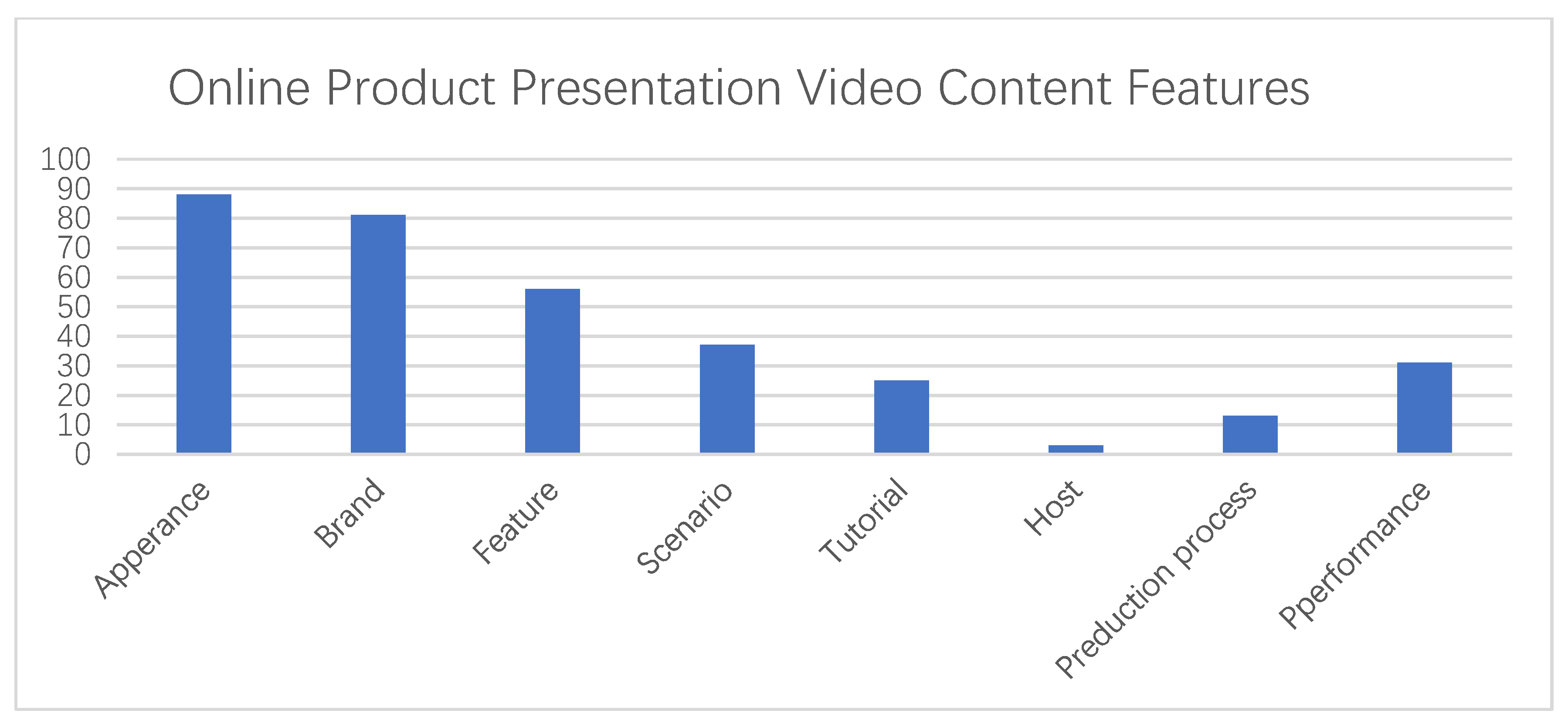
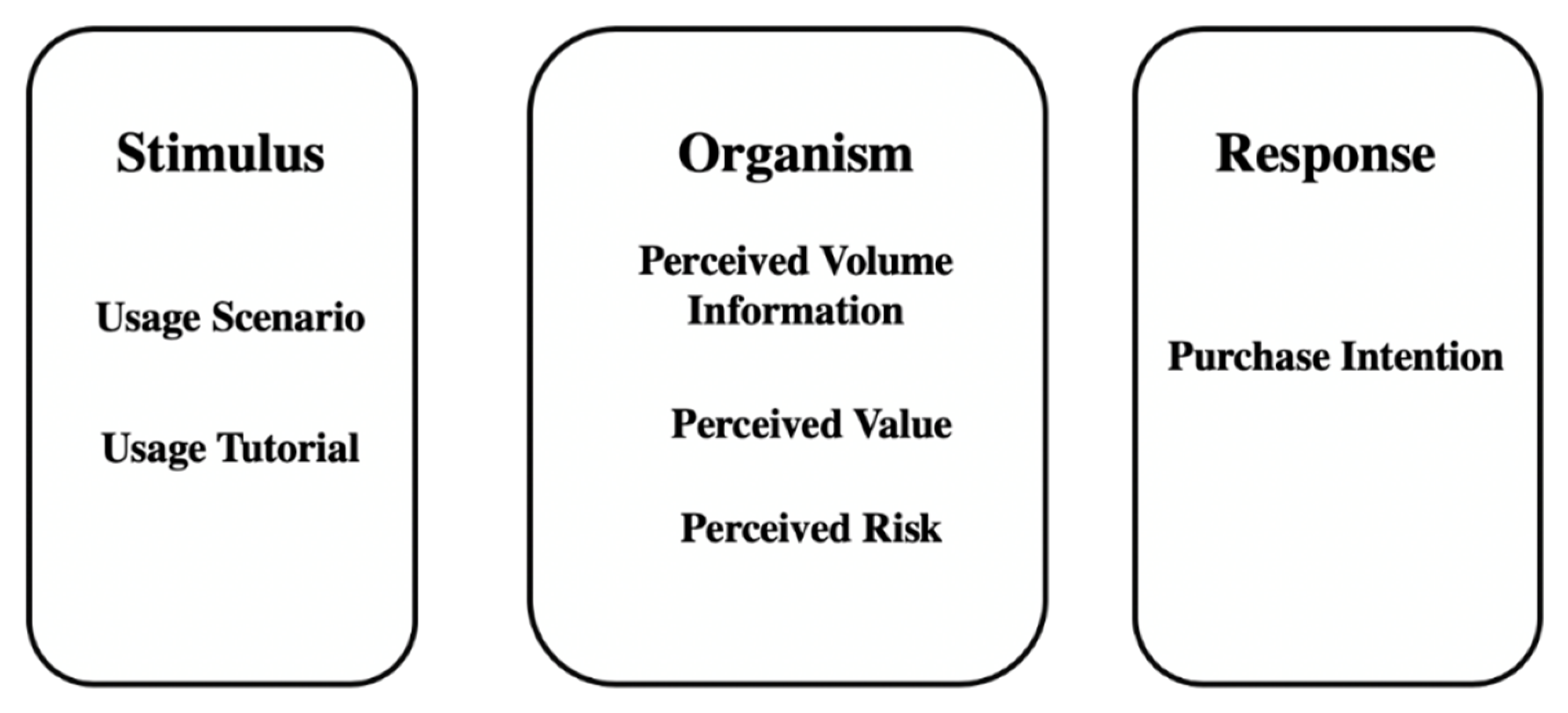
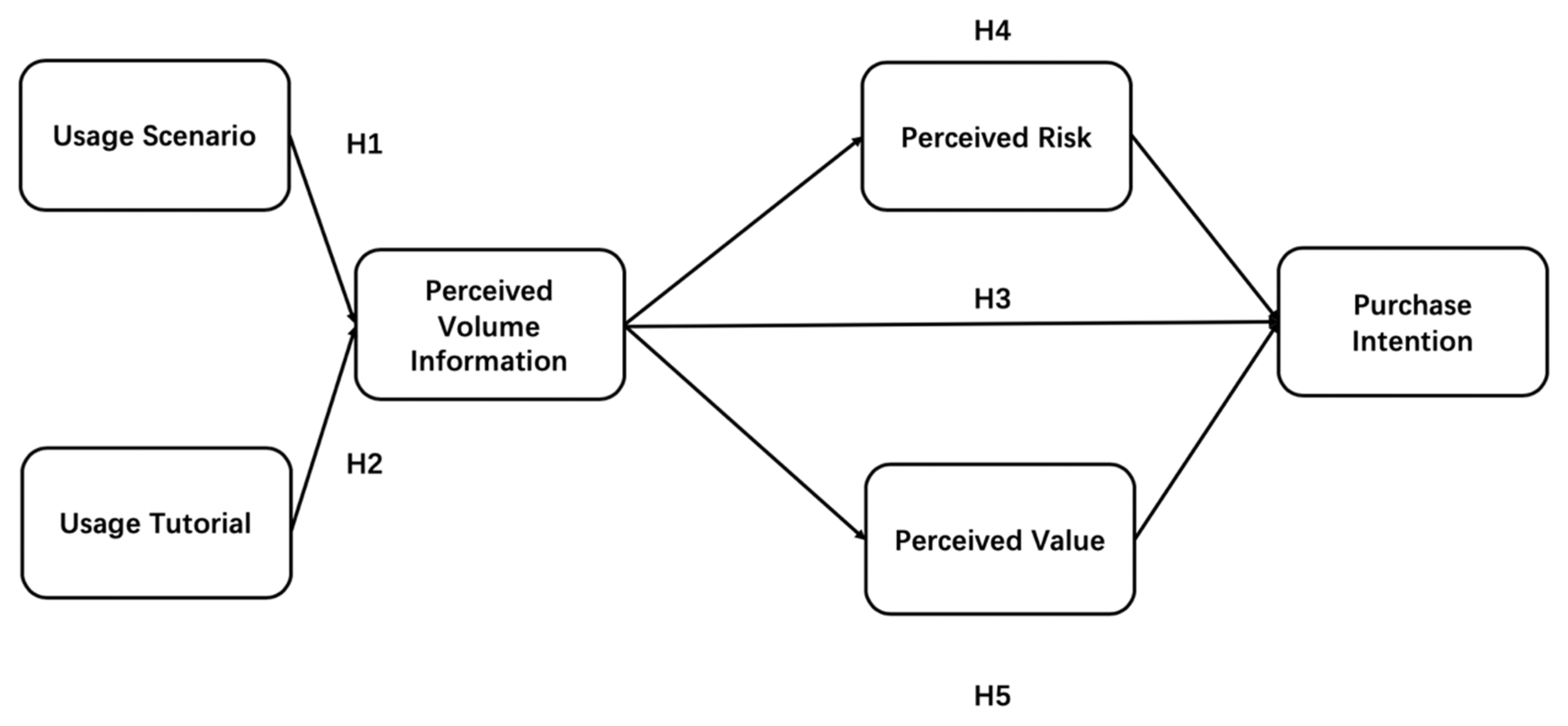
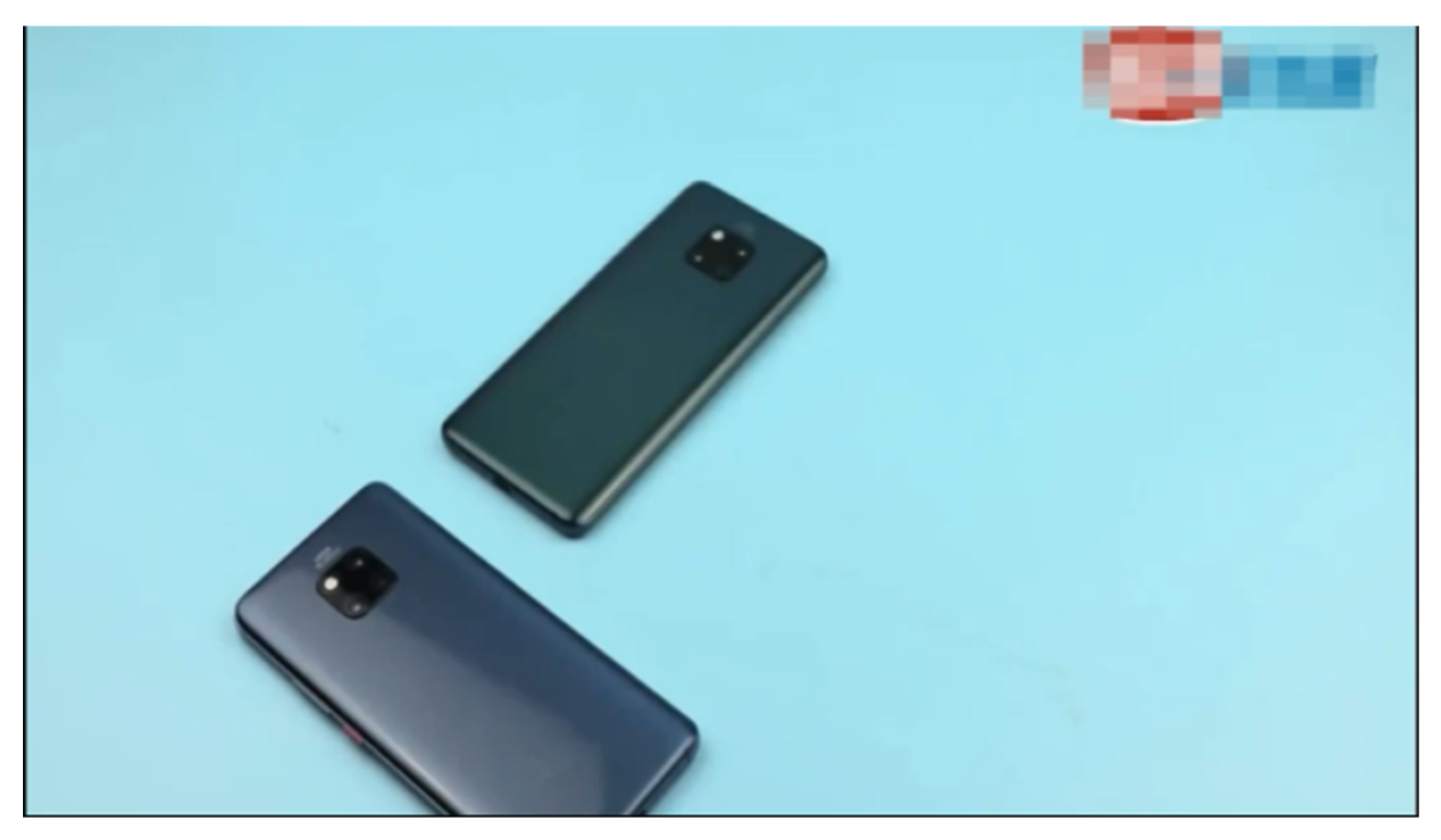
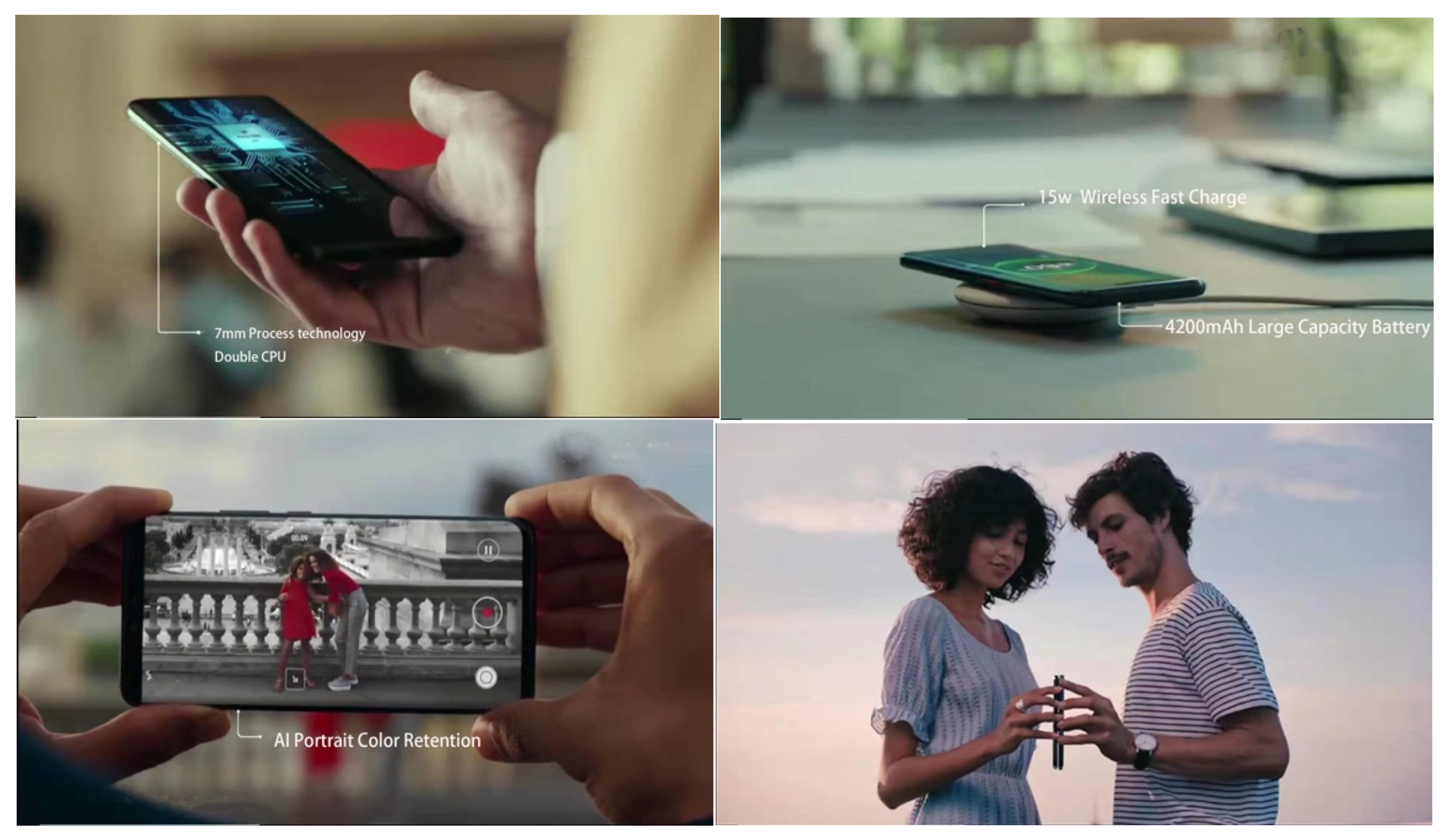
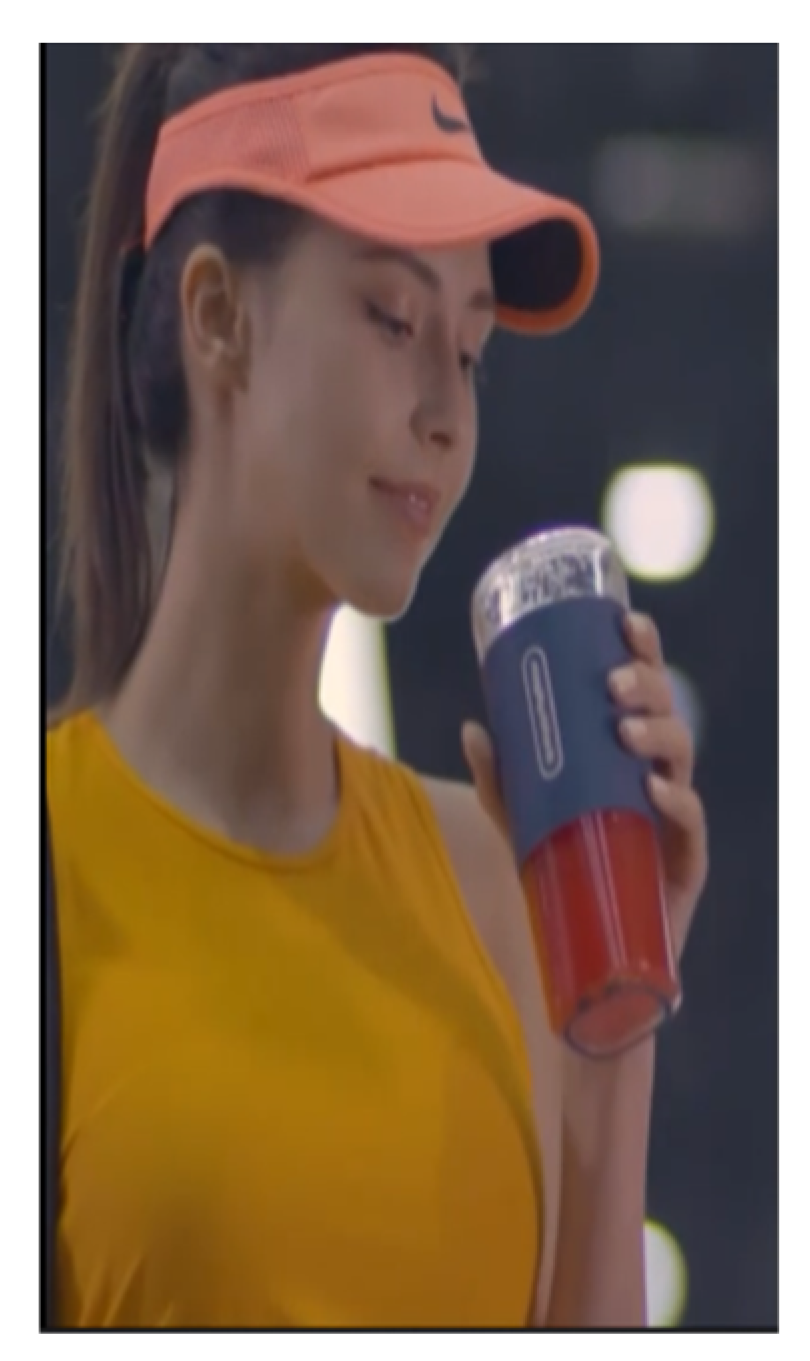
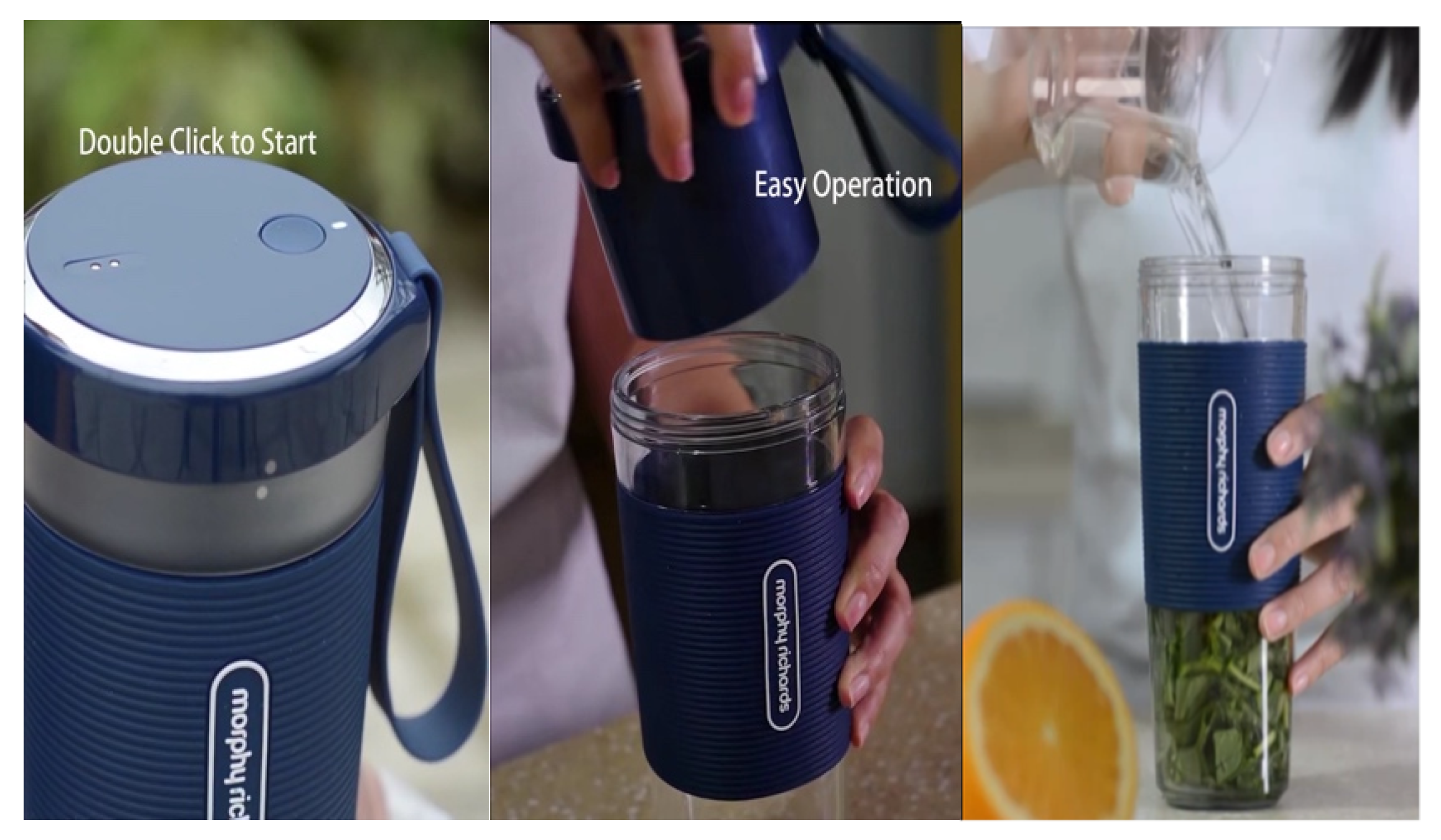
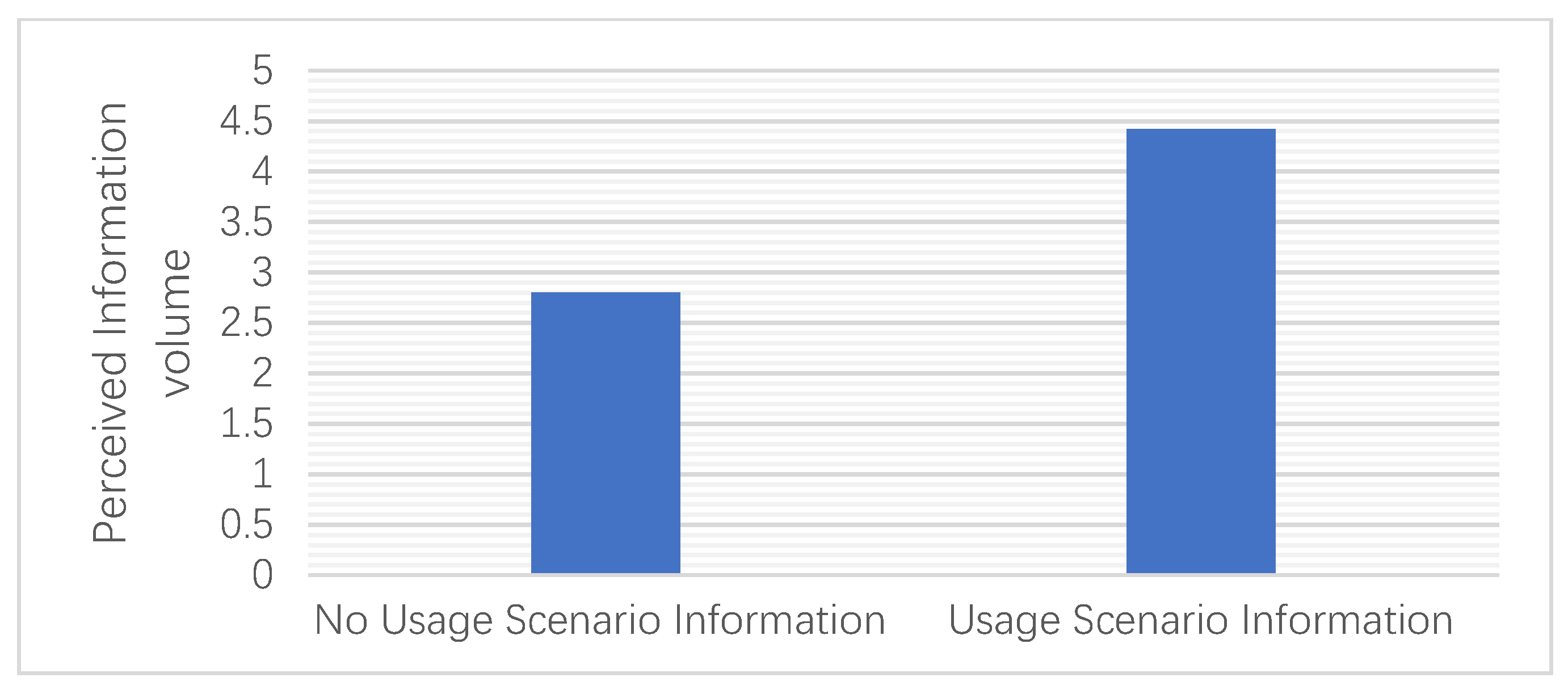
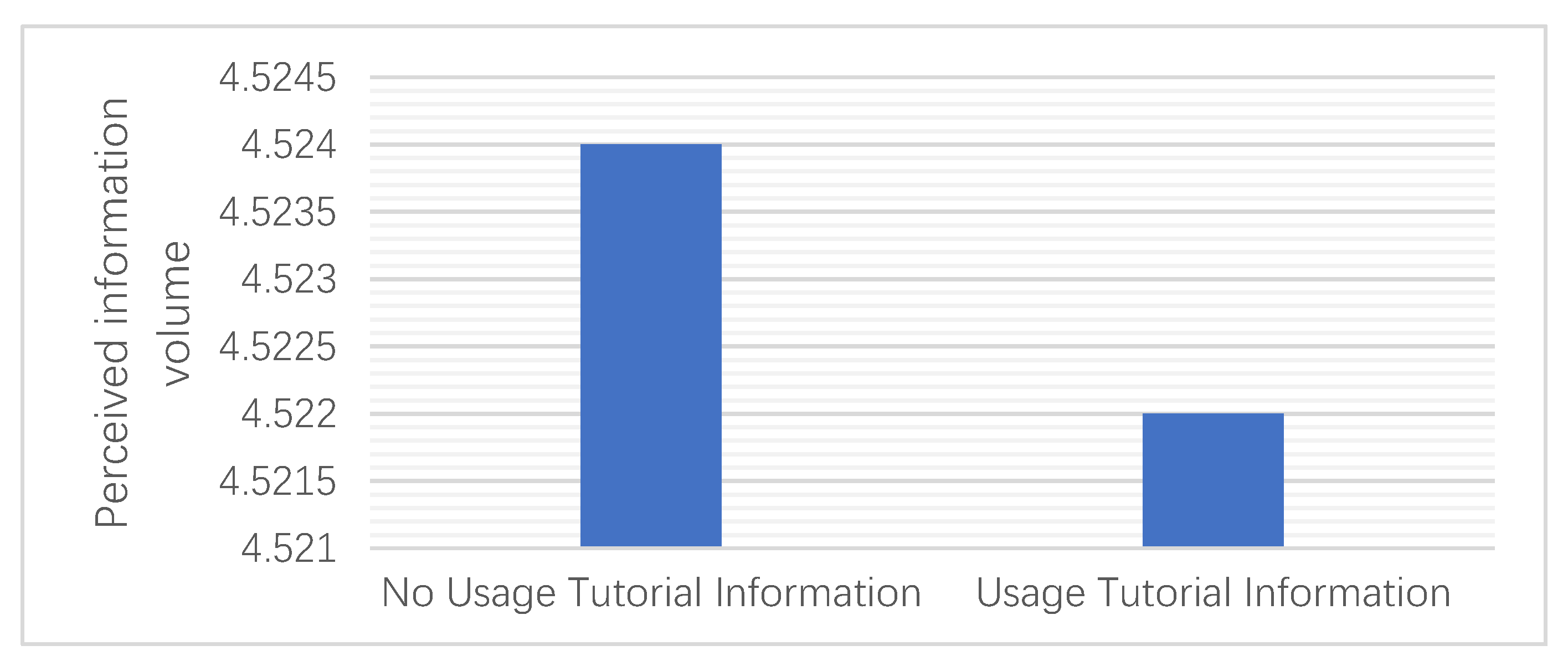
| Author | Year | Content | |
|---|---|---|---|
| Online Product display | Li, Wei, Tayi, et al. [17] | 2016 | Online product display is a basic IT tool, used by retailers. |
| Wang, Cui, Huang, et al. [18] | 2016 | From the perspective of communication, online product display is defined as a special communication, which can be used by online retailers to communicate with customers and provide product information | |
| Pera, Viglia [19] | 2016 | Visual display such as video can affect consumers’ emotions compared to text, which is beneficial to the emotional level of consumer relationship experience | |
| Viglia, Pera, Bigné [20] | 2017 | In the field of social media, some people think that the influence of pictures and videos on consumer engagement can only produce compliant participation rather than interactive participation, but the change of consumer cognition brought by text link will make consumers participate more actively. | |
| Xu, Chen, Santhanam [5] | 2015 | Video displays contain rich color, visual cues, dynamic movement and various sounds, transmitting rich information to catch consumers’ attention. | |
| Impacts of Videos on Different Products | Roggeveen, Grewal, Townsend, et al. [15] | 2015 | This paper classified products as hedonic products and functional products and explored impacts of different display form on consumers’ preference. |
| Huang, Zou, Liu, et al. [14] | 2017 | This paper classified products as experience products and search products, and explored impacts of different display form on consumers’ product review | |
| Zhang, Chen [21] | 2006 | Different online display forms make consumers having different purchase decisions for different products when making purchase decisions. | |
| Tang [22] | 2012 | Taking digital appliances as an example, consumers will not only require product parameters with more details, but also take the appearance of products into consideration, so they will require retailers to provide comprehensive and objective information | |
| Impacts of Online product presentation video on Consumer Perceptions | Suh, Kim, Kim [7] | 2018 | The complexity of product materials and perceived knowledge will affect consumers’ choice of produce presentation forms. For electronic products, consumers prefer to obtain the information of product hardness and quality by watching videos; For the diversity and problems of clothing materials, consumers prefer to view by zooming. |
| Aljukhadar, Senecal [8] | 2017 | Streaming video method can stimulate consumers to reach a higher level of arousal, trust competence, and information quality than text when consumers browsing with a recreational goal. | |
| Overmars, Poels [9] | 2015 | By comparing four different presentation formats (static interface, interactive interface, video interface, and actual product), it is confirmed that consumers can perceive the tactile sensation in real environment by simulating touch gestures with interactive interface. | |
| Jiang, Benbasat [10] | 2007 | By comparing multiple still pictures, video with narration, video with narration and virtual product experiences, it is conducted that vividness and interaction will have an impact on consumers’ cognition and emotion. | |
| Yue, Liu, Wei [11] | 2017 | This paper defined website presents product with picture, video and 3D image means as high media richness and confirmed that the influence of media richness on consumers’ perceived risk and trust. And | |
| Flavian, Gurrea, Orus, et al. [23] | 2015 | In the online environment, it is impossible for consumers to touch or check physical products, so a good online product image can help consumers to identify and understand products. | |
| Nowlis, Mandel, Mccabe [25] | 2016 | Vivid information will produce more images of products in people’s minds and increase the imaginal consumption | |
| S–O–R Model | Eroglu, Machleit, Davis [26] | 2001 | This paper modified the model under the context of online retail, where the "stimulus" is a synthesis of all the visible and audible cues for online shoppers. |
| Jeong, Fiore, Niehm, et al. [27] | 2009 | This paper explored impacts of online product display on consumer website patronage intention, online product display stimulate consumers on four levels (entertainment, educational, escapist, and esthetic) and also influence on consumers’ (arousal and pleasure) emotion, eventually influencing the website consumer website patronage intention. | |
| Fiore, Kim, Lee [28] | 2010 | This paper established the S–O–R model to explore how the level of image interactive technology influences the attitude to retailer, online purchase intention and the willingness to shop with the same retailer again. |
| Factors | Code | Measures | References |
|---|---|---|---|
| Perceived information volume (PIV) | PIV1 | Detailed product Description | Kim et al., 2010 [31,32,33] |
| PIV2 | Get lots of product information | ||
| PIV3 | Be able to fully understand product information | ||
| PIV4 | Obtained information help to make purchasing decisions | ||
| Perceived risks (PR) | PR1 | Concerning that the actual product does not match the displayed features | Kim et al., 2010 [31,32] |
| PR2 | Concerning that actual product is not satisfactory | ||
| PR3 | Concerning that some of the functions of the actual products cannot achieve the advertised effect | ||
| PR4 | Concerning that using the product will affect how others perceive you | ||
| PR5 | Concerning about using the product and your friends will think you’re funny | ||
| PR6 | Concerning product is inappropriate for using in public | ||
| Perceived value (PV) | PV1 | make a good impression on others | Soutar, 2001 [39], William et al., 1991 [40] |
| PV2 | recognized by other people | ||
| PV3 | Create a positive social image | ||
| PV4 | Like product | ||
| PV5 | Feel happy when using this product | ||
| PV6 | Enjoy using this product | ||
| PV7 | Want to own this product | ||
| PV8 | The actual price of this product is X, which is high cost performance | ||
| PV9 | Price is acceptable | ||
| PV10 | It’s a good buy | ||
| Purchase Intention (PI) | PI1 | Will choose to by this product | Kim et al., 2010 [33], William et al.,1991 [40] |
| PI2 | glade recommend this product to people | ||
| PI3 | If this product is needed, happy to buy it | ||
| PI4 | Choose the same when next purchase |
| Measurement | Sample Distribution | Experiment Counts | 1 Proportion | Experiment Counts | 2 Proportion |
|---|---|---|---|---|---|
| Gender | Male | 20 | 31.75% | 23 | 37.70% |
| Female | 43 | 68.25% | 38 | 62.30% | |
| Education | Junior college and below | 13 | 20.63% | 7 | 11.48% |
| BSc | 42 | 66.67% | 42 | 68.85% | |
| MSc | 7 | 11.11% | 11 | 18.03% | |
| PhD | 1 | 1.59% | 1 | 1.64% | |
| Disposable personal income | Below 1000 | 9 | 14.29% | 10 | 16.39% |
| 1001–1500 | 14 | 22.22% | 20 | 32.79% | |
| 1501–2000 | 12 | 19.05% | 12 | 19.67% | |
| 2001–2500 | 7 | 11.11% | 6 | 9.84% | |
| Above 2500 | 21 | 33.33% | 13 | 21.31% | |
| Have online shopping experiences | cosmetic care | 50 | 79.37% | 50 | 81.97% |
| Sport and Outdoor | 45 | 71.43% | 38 | 62.30% | |
| Underwear and accessories | 36 | 57.14% | 34 | 55.74% | |
| Jewelry | 22 | 34.92% | 11 | 18.03% | |
| Home textile products | 29 | 46.03% | 27 | 44.26% | |
| Books and Instrument | 44 | 69.84% | 44 | 72.13% | |
| Flower and Pets | 19 | 30.16% | 11 | 18.03% | |
| Digital and Home Appliance | 46 | 73.02% | 38 | 62.30% | |
| Clothes and Shoes | 53 | 84.13% | 48 | 78.69% | |
| Fresh Food | 27 | 42.86% | 31 | 50.82% | |
| Others | 23 | 36.51% | 16 | 26.23% | |
| Whether to watch short video when shopping online | Yes | 42 | 66.67% | 42 | 68.9% |
| No | 21 | 33.33% | 19 | 31.1% |
| Variables | Reliability Coefficient | Item Number |
|---|---|---|
| Perceived Information Volume (PIV) | 0.940 | 4 |
| Perceived Risks (PR) | 0.843 | 6 |
| Perceived Value (PV) | 0.954 | 10 |
| Purchase Intention (PI) | 0.902 | 4 |
| Overall Reliability | 0.926 | 24 |
| Variables | Combined Reliability (C.R.) | AVE |
|---|---|---|
| Perceived Information Volume (PIV) | 0.9571 | 0.8491 |
| Perceived Risks (PR) | 0.9711 | 0.8485 |
| Perceived Value (PV) | 0.9598 | 0.7053 |
| Purchase Intention (PI) | 0.9317 | 0.7737 |
| Variables | Perceived Information | Perceived Risks | Perceived Value | Purchase Intention |
|---|---|---|---|---|
| Perceived Information Volume (PIV) | 0.9215 | |||
| Perceived Risks (PR) | −0.063 | 0.9211 | ||
| Perceived Value (PV) | 0.776 ** | −0.127 | 0.8398 | |
| Purchase Intention (PI) | 0.676 ** | −0.134 | 0.827 ** | 0.8796 |
© 2019 by the authors. Licensee MDPI, Basel, Switzerland. This article is an open access article distributed under the terms and conditions of the Creative Commons Attribution (CC BY) license (http://creativecommons.org/licenses/by/4.0/).
Share and Cite
Hao, R.; Shao, B.; Ma, R. Impacts of Video Display on Purchase Intention for Digital and Home Appliance Products—Empirical Study from China. Future Internet 2019, 11, 224. https://doi.org/10.3390/fi11110224
Hao R, Shao B, Ma R. Impacts of Video Display on Purchase Intention for Digital and Home Appliance Products—Empirical Study from China. Future Internet. 2019; 11(11):224. https://doi.org/10.3390/fi11110224
Chicago/Turabian StyleHao, Ruohong, Bingjia Shao, and Rong Ma. 2019. "Impacts of Video Display on Purchase Intention for Digital and Home Appliance Products—Empirical Study from China" Future Internet 11, no. 11: 224. https://doi.org/10.3390/fi11110224
APA StyleHao, R., Shao, B., & Ma, R. (2019). Impacts of Video Display on Purchase Intention for Digital and Home Appliance Products—Empirical Study from China. Future Internet, 11(11), 224. https://doi.org/10.3390/fi11110224




